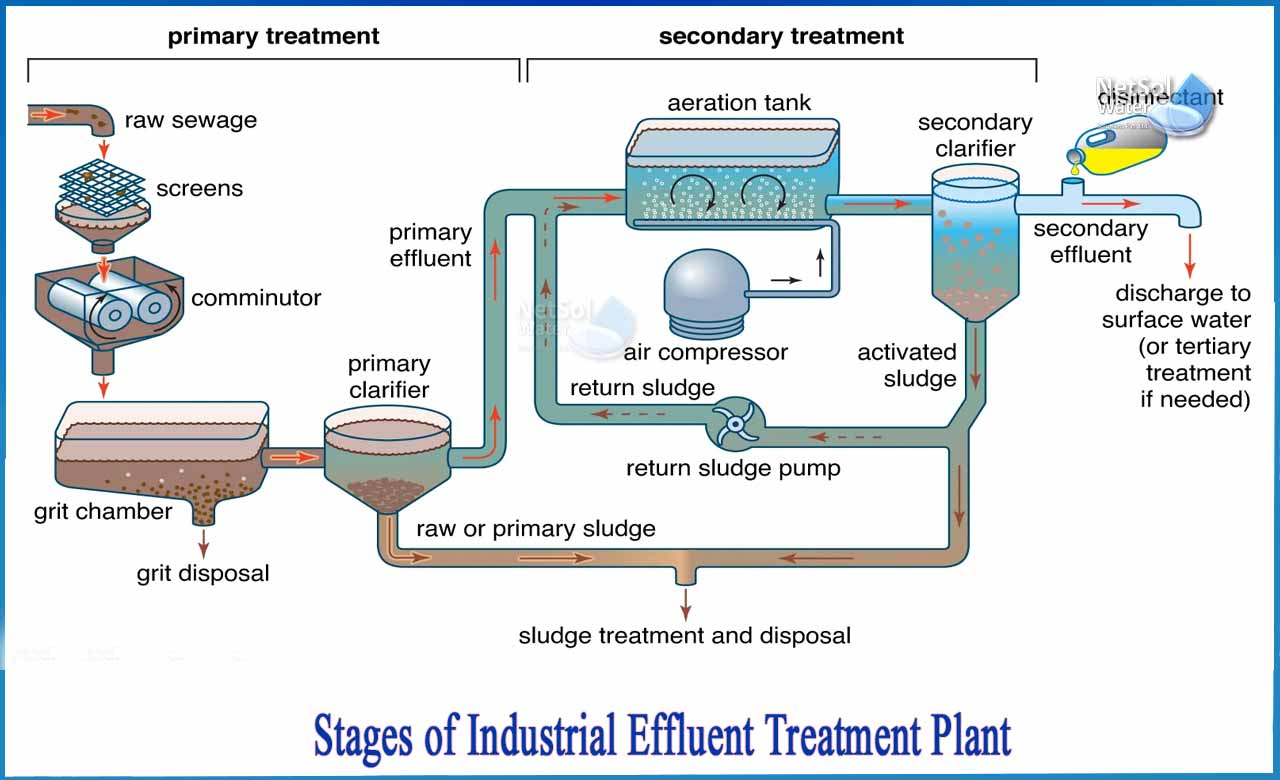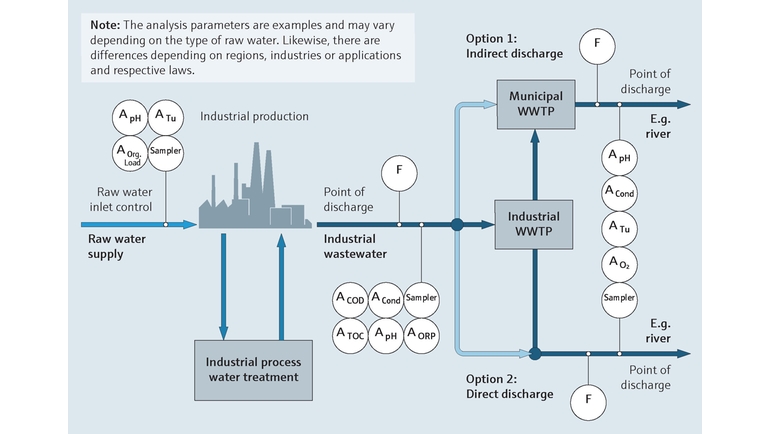Industrial Waste Water Treatment-- Cutting-Edge Technologies for Water Filtration
Industrial Waste Water Treatment-- Cutting-Edge Technologies for Water Filtration
Blog Article
Secret Strategies in Hazardous Waste Water Therapy Processes
The treatment of industrial wastewater is a crucial element of environmental management, involving a series of strategies created to minimize the effect of pollutants. From the basic physical approaches that separate solids to the sophisticated chemical and biological processes that target particular pollutants, each technique plays an important duty in accomplishing water quality requirements. Developments in innovations such as membrane layer filtering and progressed oxidation processes offer cutting-edge solutions for boosting therapy efficiency. Understanding exactly how these methods interconnect and their ramifications for sustainability raises essential inquiries about the future of wastewater monitoring in sector.
Physical Therapy Methods
Exactly how efficiently can physical treatment techniques deal with the complexities of commercial wastewater? Physical treatment techniques play a critical role in the initial stages of wastewater monitoring, concentrating largely on the elimination of solids and huge particulates. Strategies such as flotation protection, sedimentation, and purification are necessary for lowering the focus of suspended solids, thus improving the performance of subsequent therapy processes.
Sedimentation includes the gravitational settling of solids, allowing for the separation of larger products from the wastewater. This approach is especially effective in making clear water prior to biological or chemical treatments.
Furthermore, flotation protection methods, which use air bubbles to lift put on hold solids to the surface area for removal, work in treating wastewater with high concentrations of fats, oils, and greases. Overall, physical therapy approaches serve as an important primary step in the thorough monitoring of commercial wastewater, ensuring that the load on subsequent treatment phases is decreased and boosting general treatment efficiency.
Chemical Treatment Techniques
While physical treatment methods lay the foundation for efficient wastewater management, chemical treatment methods are vital for resolving the more complex pollutants commonly found in commercial effluents. These approaches use different chemical agents to speed up, reduce the effects of, or oxidize harmful materials, making sure a much more complete removal of toxins.
One typical approach is coagulation and flocculation, where chemical coagulants such as aluminum sulfate or ferric chloride are included in advertise the gathering of put on hold particles. This procedure boosts solid-liquid splitting up, decreasing turbidity and enhancing water high quality. Additionally, neutralization procedures are utilized to adjust the pH of wastewater, making use of bases or acids to counteract acidic or alkaline streams, respectively.
Oxidation-reduction reactions play an important role in derogatory natural contaminants and virus. Chemical oxidants like chlorine, hydrogen, or ozone peroxide are utilized to break down complicated organic substances, making them less damaging or a lot more biodegradable. Moreover, progressed oxidation processes (AOPs) combine multiple oxidation methods to enhance pollutant elimination performance.
Biological Treatment Processes
The effectiveness of wastewater therapy is significantly improved by organic therapy procedures, which harness the all-natural metabolic tasks of microbes to break down natural matter and remove pollutants. Industrial Waste Water Treatment. These procedures mostly involve cardiovascular and anaerobic food digestion, each customized for specific kinds of wastewater
Cardiovascular treatment procedures make use of oxygen to sustain microbial growth, promoting the break down of natural pollutants into co2 and water. Common techniques consist of triggered sludge systems, where this contact form oygenation tanks assist in the blending of wastewater with microbes, and dripping filters, which encourage biofilm growth on media surfaces.
On the other hand, anaerobic therapy processes take place in the lack of oxygen, making use of anaerobic germs to disintegrate organic issue, leading to biogas manufacturing, a renewable resource source. Anaerobic digesters are commonly utilized in industrial settings for this purpose, efficiently decreasing the volume of sludge while generating valuable biogas.
The selection of an organic therapy technique depends upon wastewater qualities, therapy objectives, and regulatory requirements. The integration of biological procedures in wastewater treatment not only enhances toxin elimination performance however likewise advertises sustainability by reducing chemical use and supporting resource recovery.
Advanced Oxidation Processes

Common AOP methods include Fenton's reagent, ozonation, and photocatalysis. Fenton's reagent, a mix of hydrogen peroxide and ferrous iron, militarizes the formation of hydroxyl radicals, making it effective for dealing with wastewater having phenolic substances and various other recalcitrant materials. Ozonation utilizes ozone as an effective oxidant, capable of degrading a wide variety of natural contaminants while at the site same time decontaminating the effluent. Photocatalysis employs light-activated stimulants, such as titanium dioxide, to improve oxidation reactions and get rid of contaminants.
AOPs use several benefits, including lowered sludge manufacturing and the capability to deal with wastewater with high focus of organic pollutants. However, the implementation of AOPs requires mindful factor to consider of operational parameters and cost-effectiveness, making sure that these advanced techniques are appropriately integrated into existing wastewater treatment systems.
Membrane Layer Filtration Technologies

Microfiltration works for eliminating put on hold solids and bacteria, while ultrafiltration targets smaller natural molecules and infections. Nanofiltration links the space in between ultrafiltration and turn around osmosis, properly removing organic substances and divalent ions. Reverse osmosis offers the highest degree of filtration, utilized largely for desalination and eliminating mono-valent ions.
Membrane layer modern technologies provide countless benefits, consisting of low power consumption compared to conventional treatment methods, modular style for scalability, and the potential for water recuperation and reuse. Difficulties such as membrane fouling and the demand for regular upkeep need to be resolved to ensure system efficiency. Overall, membrane purification modern technologies stand for a crucial element of modern industrial wastewater treatment techniques, advertising sustainability and source preservation in water administration.
Verdict
In final thought, industrial wastewater therapy employs a diverse variety of strategies, including physical, chemical, biological, and advanced approaches. Continued advancements in these techniques will certainly further boost the effectiveness and effectiveness of wastewater therapy procedures in industrial settings.
The therapy of commercial wastewater is an essential element of environmental management, entailing an array of strategies developed to mitigate the impact of contaminants.How successfully can physical therapy methods address the intricacies of commercial wastewater?Advanced oxidation procedures (AOPs) stand for an innovative strategy in industrial wastewater treatment, created to successfully weaken organic toxins that are frequently immune to standard treatment approaches (Industrial Waste Water you can look here Treatment).In final thought, industrial wastewater therapy utilizes a diverse selection of strategies, consisting of physical, chemical, organic, and progressed methods. Continued developments in these approaches will even more enhance the effectiveness and performance of wastewater treatment processes in commercial settings
Report this page